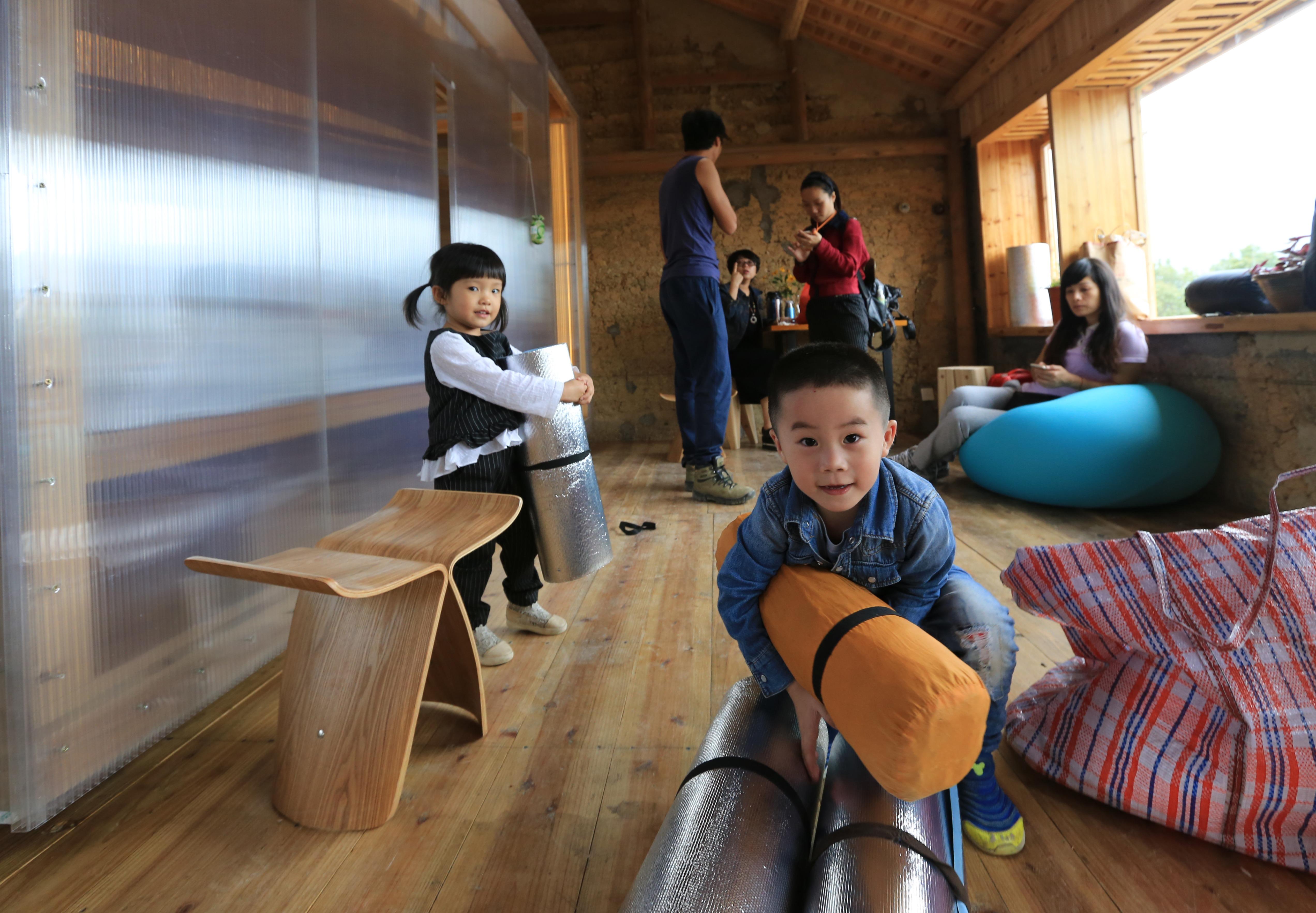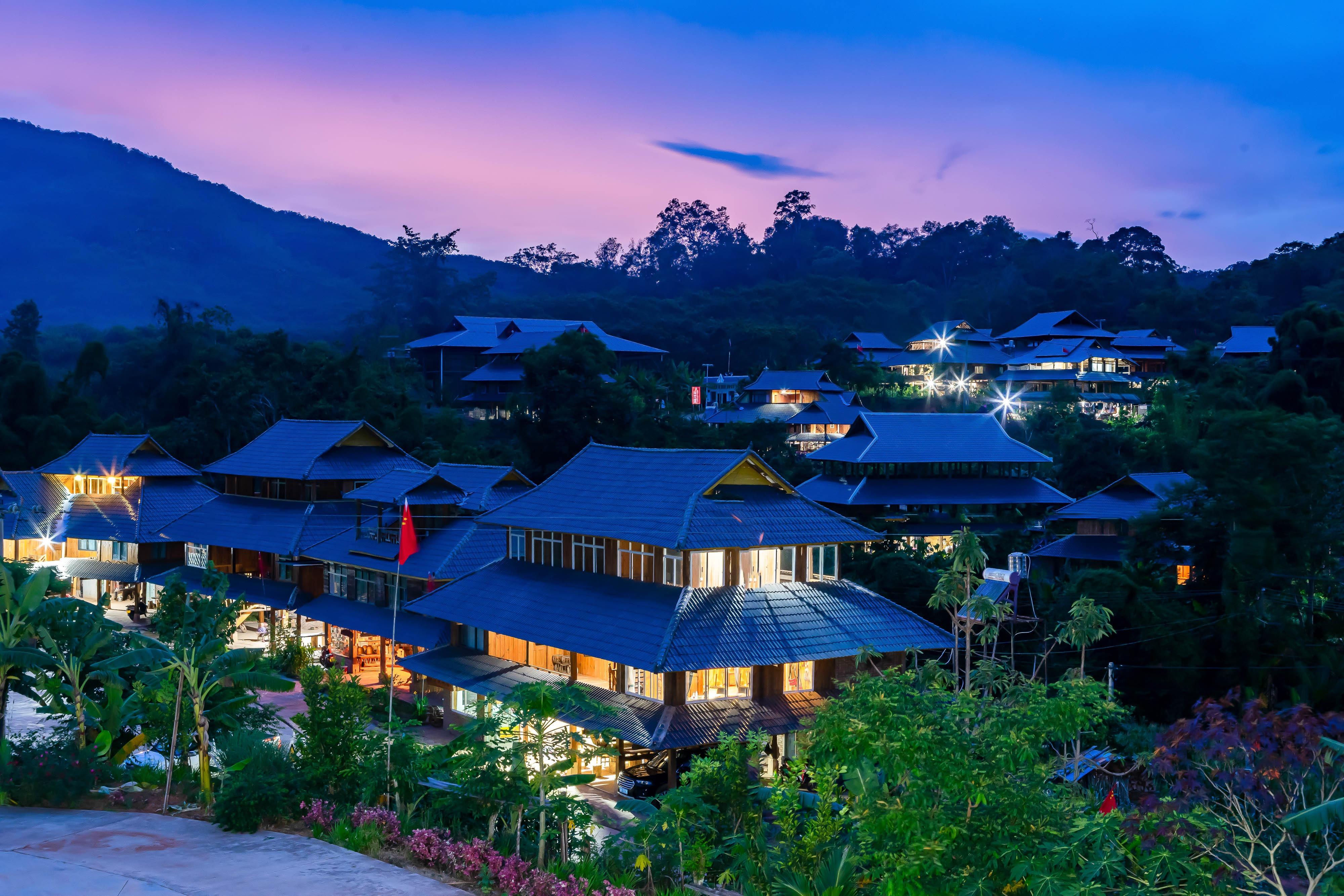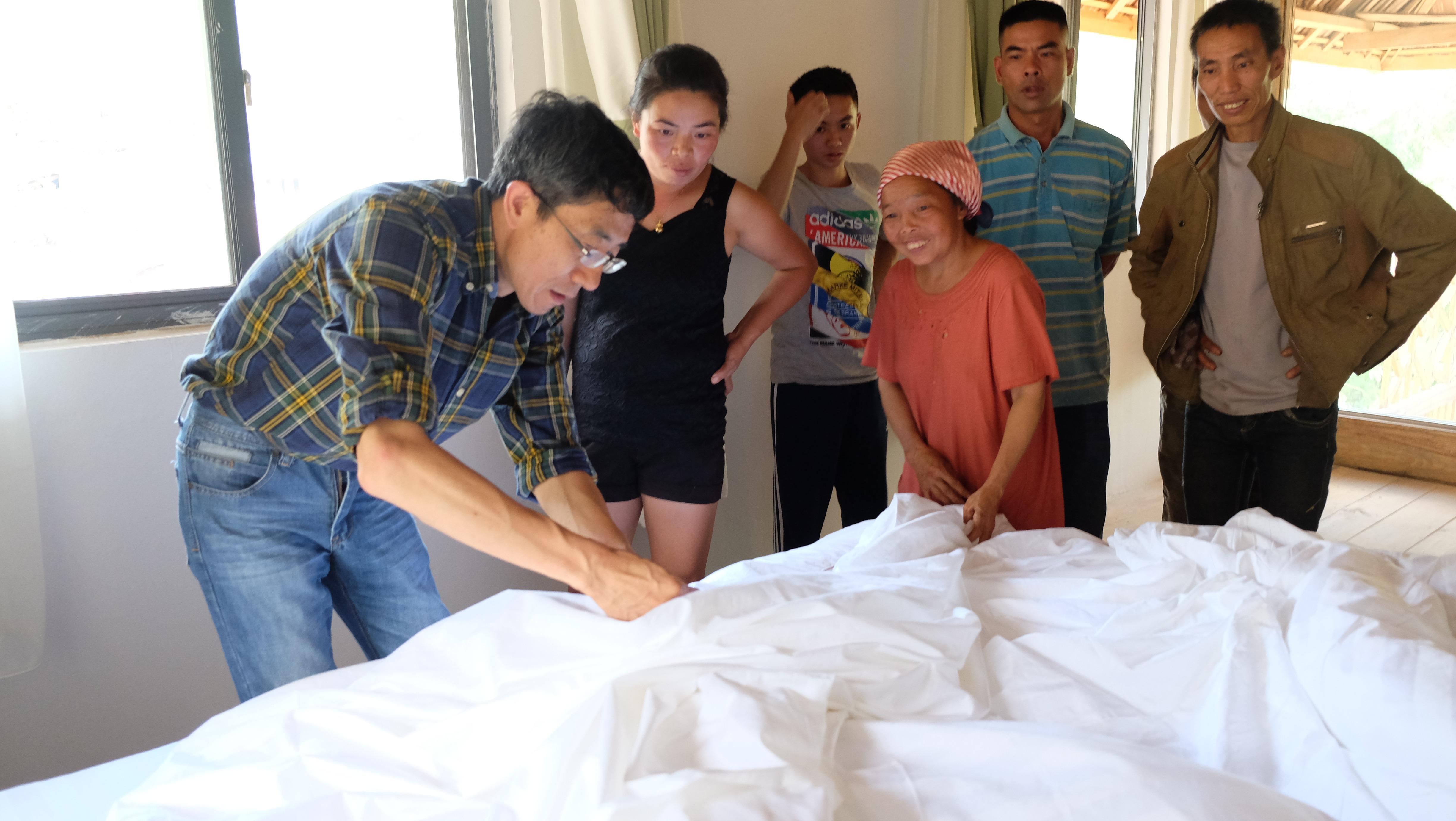Vitalization projects bring new life while preserving traditions
 Xijiang Qianhu Miao village in Guizhou province is a highly popular destination among visitors. Seen from above, the village is a sea of bamboo houses situated amid terraced rice fields. (PHOTO PROVIDED TO CHINA DAILY)
Xijiang Qianhu Miao village in Guizhou province is a highly popular destination among visitors. Seen from above, the village is a sea of bamboo houses situated amid terraced rice fields. (PHOTO PROVIDED TO CHINA DAILY)
Tucked away in the rugged terrain of Guizhou province, Xijiang Qianhu Miao village — a highly popular destination among visitors — is making its mark in the competitive rural tourism industry.
Born and bred in Xijiang township, sociologist Li Tianyi, 48, has witnessed firsthand the village's transformation since the early 1980s.
Some 40 years ago, the ethnic village inhabited by members of the Miao and Dong communities was grappling with intractable poverty. Now, the village ranks among the top scenic spots for young urban residents longing for a respite from the hustle and bustle of city life and for the chance to post photos of their visits on social media.
Li, a member of the Miao ethnic group who teaches at Guizhou Minzu University in Guiyang, the provincial capital, said the secret of the village's commercial success is its distinctive culture.
In 1982, as China gradually opened up its economy and prioritized growth, Xijiang Qianhu Miao Village, which roughly translates as "Miao village with 1,000 households", was designated a scenic spot by the provincial government for its breathtaking views.
 Residents of Xijiang village, Leishan county, Guizhou, attend a dance festival in November. (HUANG XIAOHAI / FOR CHINA DAILY)
Residents of Xijiang village, Leishan county, Guizhou, attend a dance festival in November. (HUANG XIAOHAI / FOR CHINA DAILY)
Seen from above, the village is home to a sea of bamboo houses spread among rolling terraced rice fields and fish ponds. As night falls, tens of thousands of light bulbs gleaming dim and yellow from residents' homes transform the ancient hamlet into a kind of fairyland. Some vloggers have even compared the village with those depicted by Japanese director Hayao Miyazaki in his 2001 animation film Spirited Away.
Visitors immerse themselves in local culture by taking part in festivities in which villagers dressed in traditional clothing parade on the streets and slaughter pigs by the roadside.
Li said: "The terraced fields, festivals, folk songs and dances are all embedded in the rice-growing culture of the Miao people. The core to the village's development is its culture."
For years, Li monitored the development of tourism in the village. In 2016, he set up the Xijiang Qianhu Miao Village Cultural Research Institute, with the aim of reviving the fading culture of his people and ultimately sustaining the tourist boom from which locals and those living beyond the area have prospered.
Tourism and traditional culture, as Li has observed, go hand in hand. "Tourism gives traditional culture a second life in modern times and also enables traditional culture to travel farther," he said.
 Children play in a hostel transformed from a traditional house in Pingtian village, Songyang, Zhejiang province. (PHOTO PROVIDED TO CHINA DAILY)
Children play in a hostel transformed from a traditional house in Pingtian village, Songyang, Zhejiang province. (PHOTO PROVIDED TO CHINA DAILY)
Competitive edge
To help Xijiang gain a competitive edge amid increased rural tourism, which has been pursued by the authorities since 2013 to end some of the nation's most entrenched poverty, the institute researched and documented the intangible cultural heritage of the Miao people, such as their folk songs. Li said these efforts provided the basis for devising entertainment projects to provide visitors with an immersive experience.
For example, one of the village's main attractions was inspired by the Miao tradition of throwing lanmenjiu, or rice wine parties, to entertain wedding guests.
Li suggested that the tradition be adapted to welcome visitors to Xijiang. According to tradition, only when visitors have drunk 12 cups of rice wine — each cup representing one wish from villagers for visitors, such as becoming more attractive — would arrivals be allowed to enter the village.
"While we need to find those traditions that resonate with modern-day visitors, we simply cannot just reinvent traditions out of thin air," Li said
Younger travelers often lament that some ancient towns are becoming overly commercialized, but Li said they do not dislike commercialization itself.
"They hate homogenization," he said, referring to simply replicating established tourism models. "Tourism must be based on local culture and a region's distinctive resources," Li said.
 Hebian village, an ethnic Yao community, sits on the edge of a subtropical forest in Yunnan province. (PHOTO PROVIDED TO CHINA DAILY)
Hebian village, an ethnic Yao community, sits on the edge of a subtropical forest in Yunnan province. (PHOTO PROVIDED TO CHINA DAILY)
Rural poverty has been eradicated as China sets out on a new journey to vitalize the countryside.
In December, a guideline published by the Communist Party of China Central Committee and the State Council stated that construction projects, such as renovating rural homes and upgrading dirt roads, are being planned to bolster rural infrastructure. Rural tourism fostered during the 10-year fight against poverty is also likely to see further growth, experts said.
With such work now underway, Premier Li Qiang has emphasized that after they are revamped, rural villages should not look the same.
On March 13, at a news conference to mark the close of this year's National People's Congress, he said, "China is a vast country with cultures and customs that vary from village to village, even though they may be just a few miles apart."
Li took time at his first public appearance since being appointed premier just two days earlier to stress that rural development is not solely about economic growth. It is also important to highlight the countryside's economic, ecological, social and cultural values, preserve local rural culture, and avoid all villages having the same appearance, he said.
 Li Xiaoyun (left), a rural development expert at China Agricultural University, shows Hebian villagers how to prepare a hotel room for visitors. (PHOTO PROVIDED TO CHINA DAILY)
Li Xiaoyun (left), a rural development expert at China Agricultural University, shows Hebian villagers how to prepare a hotel room for visitors. (PHOTO PROVIDED TO CHINA DAILY)
Protection stressed
Li Xiaoyun, a rural development expert at China Agricultural University, said that if all villages were identical, the countryside would no longer trigger nostalgia among the public. In addition, farmers would not be able to tap the economic value of Chinese culture in different regions.
"More and more places are putting increased emphasis on protecting and inheriting regional cultural characteristics while vitalizing themselves," he said.
Li Xiaoyun is among scholars using their expertise to curb rural poverty through tourism, part of the antipoverty drive that began a decade ago.
In 2014, he traveled with a team of researchers from Beijing to Hebian, which translates as "riverside village", in Yunnan province. This picturesque ethnic Yao community sits on the perimeter of a subtropical forest.
Initially intended to be a field study of the poverty-stricken community staged over just a few months, the team's involvement with the village lasted several years. By the time it ended in 2017, the team had helped transform Hebian into a tourist resort complete with bamboo hotels, 4G internet access and nightclubs.
"Using the poverty relief fund, the village was rebuilt based on its original architectural style, and the traditional lifestyles of the locals were preserved," Li Xiaoyun said.
The renovation work, which included adding toilets and air-conditioning, helped make the village a more welcoming place for farmers to stay.
Li Xiaoyun has surveyed a range of rural development projects, from coastal Zhejiang province to the inland municipality of Chongqing, and come to the conclusion that those that are successful never involve demolishing old villages to build new ones from scratch.
He said successful projects call for minute modifications to be made to the original layout of a community, in the hope of improving its socioeconomic functions so that "traditions can be organically connected to modernity".
Some developers decide to move farmers out of their home village and turn it into a purely commercial area. At first glance, the village seems to have been preserved, whereas it has been destroyed, Li Xiaoyun said.
"The primary function of villages is to provide homes for farmers," he added.
Villages also need industries to provide jobs, and the integrated development of farming, craftsmanship and the service sector represented by tourism is the ultimate route to vitalization, he said.
As he does not believe in relying on a single source of income, Li Xiaoyun set up an e-commerce center in Hebian to help sell local farm produce, including organic eggs and pomelos.
"Tourism is not the only solution for rural villages," he said.
 Two- and three-story traditional homes blend with their surroundings in Youtian village, Songyang. (ZHANG WEIGUO / FOR CHINA DAILY)
Two- and three-story traditional homes blend with their surroundings in Youtian village, Songyang. (ZHANG WEIGUO / FOR CHINA DAILY)
Tasteful effect
He Wei, dean of the architecture department at the Central Academy of Fine Arts in Beijing, said many traditional rural communities are pleasant sights.
Unlike urban residents living in high-rise apartments, those in rural areas design and build their own homes — often using materials sourced locally, such as rocks in mountainous regions, or timber in southern provinces. As a result, most rural homes are not as neatly positioned as tower blocks in cities. However, these two- or three-story traditional homes blend perfectly with their surroundings.
"These properties unexpectedly create a tasteful visual effect, and standing outside these homes is a relaxing and pleasant experience," He said.
A love of rural life helped inspire He to turn a crumbling dirt house in Pingtian village, a cloud-enveloped hamlet in Songyang, Zhejiang province, into a popular hostel for young people.
Named Yeyejia, which translates as "grandpa's", the property was inherited by He's client from his grandfather. The two-story structure — the second floor is used to store grain — is more than 100 years old, but time and lack of repairs had left their mark on the rough-looking exterior walls.
Like many villages in China, Pingtian had largely been deserted by its residents, with just a few seniors remaining. Situated halfway up a slope, the village is surrounded by mountains.
To avoid interfering with the farmhouse's "harmonious relations" with its surroundings, He and his colleagues decided to preserve the exterior while making significant changes to the interior. The aim was to provide cozy accommodations for visitors — mostly young people — and offer a temporary escape from urban life.
"The modern interior contrasts sharply with the property's mottled facade. This contrast spills over through the doors and windows, creating a strong psychological tension and sense of beauty. The design brings history into contemporary life," He said.
Traditional homes should not be preserved by "fixing" them to a certain time in history. Instead, preservation efforts should meet the demands of modern-day residents, He added.
Since 1978, China has gradually opened up its economy and launched a rapid urbanization drive that encompasses efficiency and most modern aspects of city life.
To a certain degree, this process has eroded rural culture and led to the demolition of traditional homes to make way for concrete and steel structures, He said. As a result, many villages that are thousands of kilometers apart basically look the same.
Urbanization has brought many rural people to cities, but society should be wary of rural areas being significantly changed by urbanization, He added.
Tang Ying in Nanchang contributed to this story.
Contact the writers at lilei@chinadaily.com.cn


